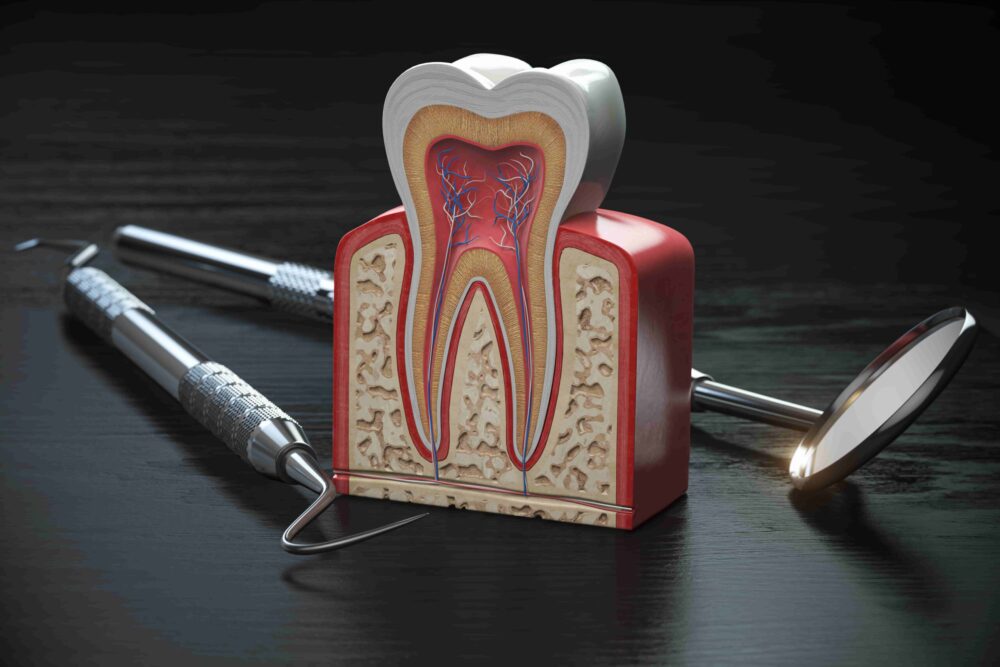A clear explanation of how root canals work, why they’re needed, and whether they’re the right choice for your dental health.
If you’ve been told you need a root canal, you might have questions—or even a little anxiety. Don’t worry, you’re not alone. Despite their reputation, root canals are safe, routine procedures that can save your natural tooth and eliminate pain caused by infection.
At Pecan Tree Family Dentistry, we believe in educating patients so you feel confident about your treatment choices. In this guide, we’ll walk through what a root canal really is, address common myths, outline pros and cons, and explore alternatives.
What Is Root Canal Treatment?
A root canal is a dental procedure used to treat infection or inflammation inside the tooth—specifically, in the pulp and root canals. When left untreated, this infection can lead to pain, swelling, abscesses, or even tooth loss.
During the procedure, the dentist:
- Removes the damaged pulp (nerve tissue and blood vessels)
- Cleans and disinfects the inside of the tooth
- Fills the space with a biocompatible material
- Seals the tooth with a filling or dental crown for protection
When Is a Root Canal Needed?
You may need a root canal if:
- You have severe tooth pain, especially when chewing or applying pressure
- You experience lingering sensitivity to hot or cold
- The tooth is darkened or discolored
- There’s swelling, tenderness, or a pimple-like bump on the gums
- You’ve had deep decay, trauma, or repeated dental procedures on the same tooth
Common Myths About Root Canals
Let’s clear up a few widespread misconceptions:
❌ Myth 1: Root Canals Are Extremely Painful
✅ Truth: With modern techniques and local anesthesia, root canals are no more uncomfortable than a regular filling.
❌ Myth 2: It’s Better to Just Pull the Tooth
✅ Truth: Saving your natural tooth helps preserve chewing function, jawbone health, and alignment. Extractions should only be a last resort.
❌ Myth 3: Root Canals Cause Illness
✅ Truth: This myth was debunked decades ago. There’s no scientific link between root canals and systemic disease.
Pros of Root Canal Treatment
- ✅ Preserves your natural tooth
- ✅ Relieves pain from infection
- ✅ Maintains normal biting and chewing ability
- ✅ Prevents jawbone deterioration
- ✅ More cost-effective in the long run than extraction and replacement
Cons of Root Canal Treatment
- ❌ May require multiple visits, especially for molars
- ❌ Tooth may become brittle and need a crown afterward
- ❌ Slight risk of re-infection if not sealed properly or if oral hygiene is neglected
What Are the Alternatives to Root Canal Treatment?
If a root canal isn’t the right option for you, these are potential alternatives:
1. Tooth Extraction
Removing the tooth may be necessary if it’s too damaged to restore. However, this can lead to shifting teeth and bone loss unless replaced.
➡️ Learn more about restorative dentistry options
2. Dental Implant
After extraction, you may consider replacing the missing tooth with a dental implant, which looks and functions like a natural tooth.
3. Bridge or Partial Denture
A dental bridge or partial denture can also replace a missing tooth, though they don’t preserve the jawbone like implants do.
What to Expect After a Root Canal
- Mild soreness or sensitivity for a few days
- Normal eating and brushing can resume shortly after
- You’ll likely need a crown in the next visit to protect the tooth
- Excellent oral hygiene is key to long-term success
Final Thoughts: Don’t Let the Myths Scare You
Root canal treatment is a safe, effective way to save your tooth and protect your oral health. If you’re experiencing pain or infection, delaying care can lead to bigger problems—and more expensive solutions.
📞 Need help deciding? Contact Pecan Tree Family Dentistry to schedule your exam. We’ll evaluate your tooth, walk you through your options, and help you make the best decision for your smile.



